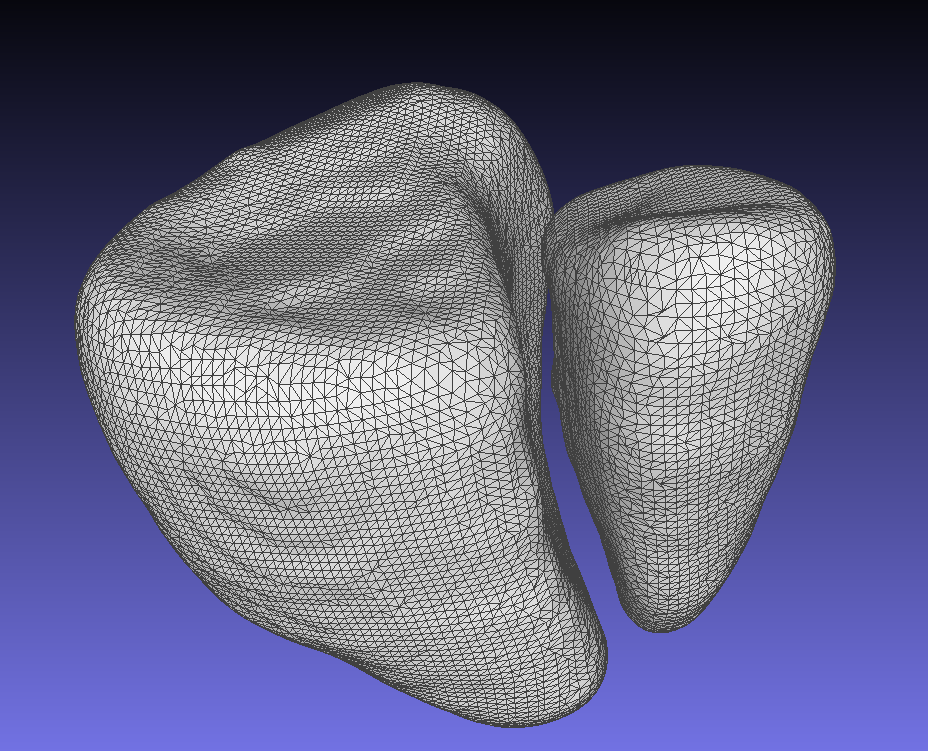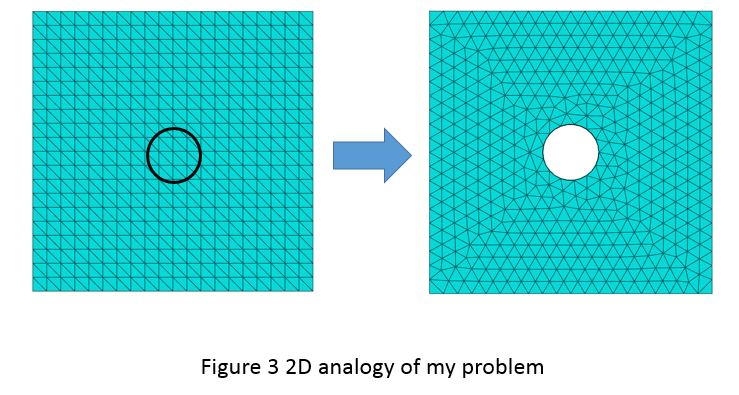


Duplicata Īdding an off-centre internal sphere surface Defining the sub-volumes addPoint ( 0, 0, 0, dens ) # Points of the plane of the base z=0Ī = occ. pi / 180 ) NR = 10 NT = 5 # Default element size If regular meshes are desired, we may need to set up transfinite interpolation: setPhysicalName ( 3, VOLUME_g, 'VOLUME' ) setPhysicalName ( 2, FACINF_g, 'FACINF' ) # Physical group for the volume setPhysicalName ( 2, FACEEF_g, 'FACEEF' ) FACINF_g = model. setPhysicalName ( 2, FACSUP_g, 'FACSUP' ) FACEEF_g = model. setPhysicalName ( 2, FACEAE_g, 'FACEAE' ) FACSUP_g = model. setPhysicalName ( 2, FACEAB_g, 'FACEAB' ) FACEAE_g = model. setPhysicalName ( 1, LEA_g, 'LEA' ) # Physical groups for the facesįACEAB_g = model. setPhysicalName ( 1, LFE_g, 'LFE' ) LEA_g = model. setPhysicalName ( 1, LBF_g, 'LBF' ) LFE_g = model. setPhysicalName ( 1, LAB_g, 'LAB' ) LBF_g = model. setPhysicalName ( 0, nodemid_g, 'NOEUMI' ) # Physical groups for the edges setPhysicalName ( 0, EP_g, 'EP' ) nodemid_g = model. setPhysicalName ( 0, AP_g, 'AP' ) EP_g = model. setPhysicalName ( 0, F_g, 'F' ) AP_g = model.

setPhysicalName ( 0, E_g, 'E' ) F_g = model. setPhysicalName ( 0, B_g, 'B' ) E_g = model. setPhysicalName ( 0, A_g, 'A' ) B_g = model. The geoemtry will then be synchronized in gmsh.Ī_g = model. Some minor differences exist between models which will be discussed later. We will then create 3D models, if necessary. addCircleArc ( E, PO, A ) # Add curve loop and plane surfaceįACINF_loop = occ.
#Volume mesh in gmsh install#
To do that we set up a Python3 environment and install gmsh into it using pip.įirst, we will import the packages we will need: We will use the Python interface to gmsh and use Juypter notebook to make the process of mesh generation Meshes that we create with gmsh have to be similar to those in the test suite. We also want to retain the general properties of the meshes provided with the Code_Aster validation test suite the

The model consists a hollow circular cylinder that is modeled as a 45 degree segment Geometry of the segment of the cylinder to be meshed. Will also talk a bit about how the element numbers that are associated with the keyword MAILLE in Code_Aster canīe identified in the gmsh meshes. In this article, we will discuss the options that can be used in gmsh to create meshes containing these elements. HEXA27, PENTA18, TETRA10, QUAD9, and TRIA6 that are generated by gmsh under default conditions. Needed meshes containing HEXA20, PENTA15, TETRA10, QUAD8, and TRIA6 elements instead on the complete elements
#Volume mesh in gmsh manual#
Recently, during the process of translation the manual for the Sometimes Salome-Meca is more convenientįor mesh generation. We also annotate the command filesĭuring the process and try to generate new meshes when the task is not too difficult. The process is not just a straightforward translation of the text in the French manuals.
#Volume mesh in gmsh manuals#
We have been translating a few Code-Aster verification test manuals into English. Identifying specific elements in Code_Aster command files.Mix of 8-node quadrilateral (QUAD8) and 6-node triangle (TRIA6) elements.Setting up gmsh for modeling and meshing.Meshes with different element topologies in gmsh (for Code-Aster)


 0 kommentar(er)
0 kommentar(er)
